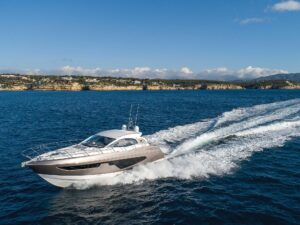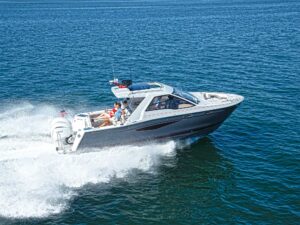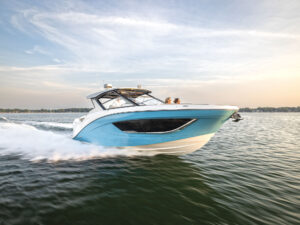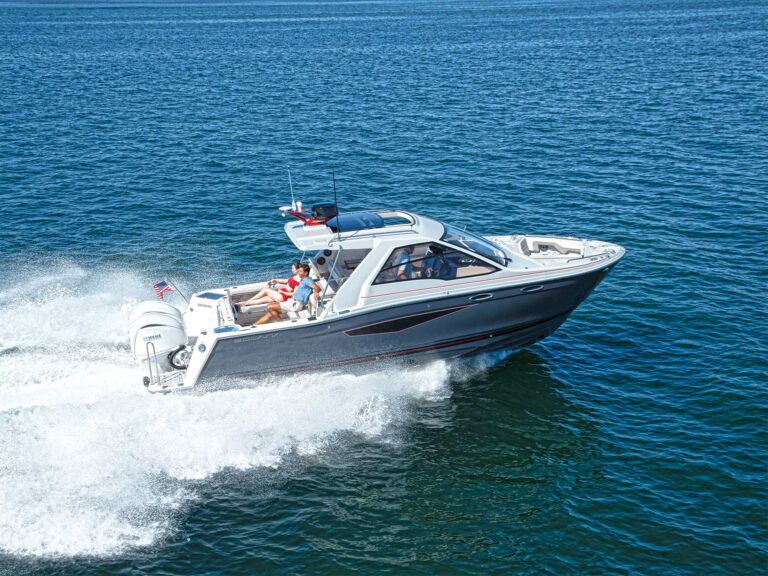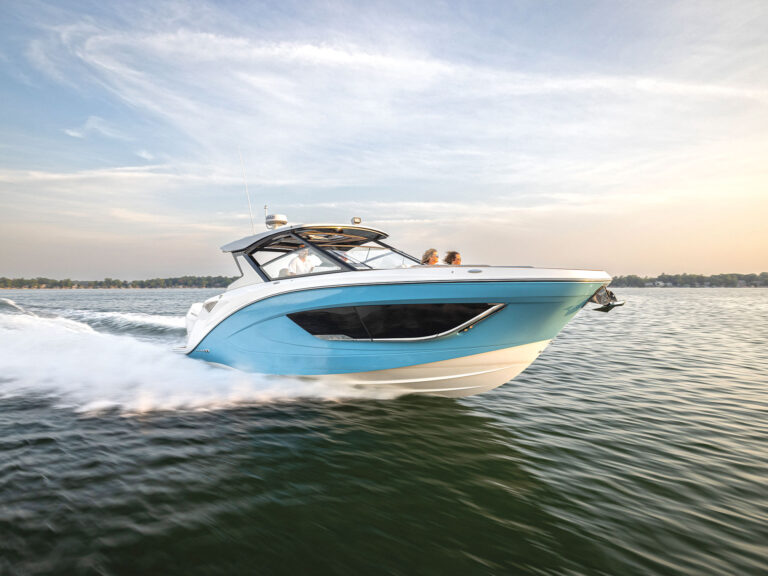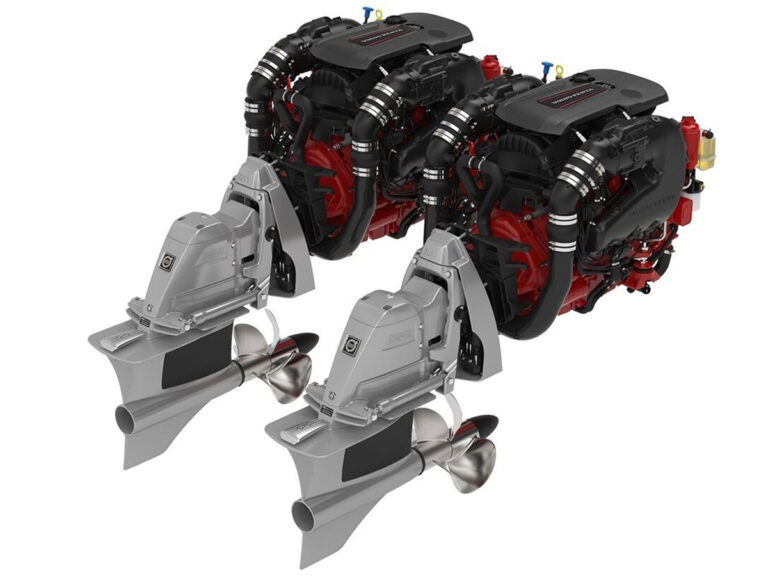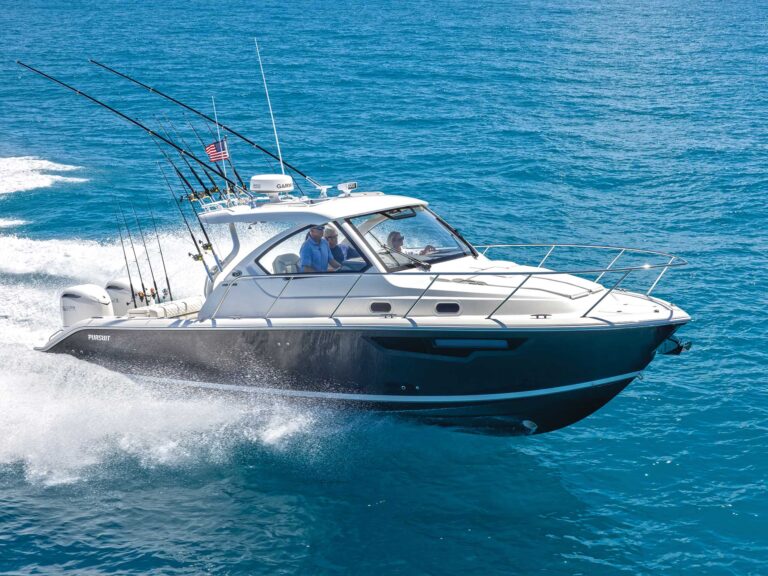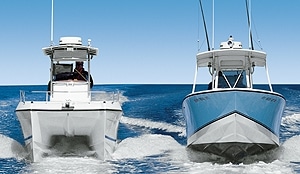
The controversy rages in dockside watering holes, tackle shops, and Internet chat rooms: Which rides better-a catamaran or a V-hull? So far, all the talk has been purely subjective: A cat feels like this, a V-hull feels like that. To us, that’s useless. At Boating Magazine, we need hard numbers, things that we can quantify, then we’ll decide. So we took a Regulator 26, which just might be the best-riding V-hull for its size, and a Glacier Bay 260 Canyon Runner, one of the best-riding cats, and wired them with expensive sensing gear. Rather than a match between two specific boats, it would be a comparison of the finest qualities of each type. We expected the cat to be smoother when the going got rough, but what about the other times? Is it the most comfortable all-around boat? It took us a year-that’s right, one full year-to compile and understand the data, but here, finally, is the answer.
Measured Madness
Our first problem was how to quantify a boat’s motion underway. The best tool we came up with is an accelerometer, which records changes and degrees of motion. We also had electronic gear to measure the boats’ angles, WAAS-enabled GPS units, rangefinders to measure distances, four laptops, stopwatches, plumb bobs, measuring tapes, and eventually, a collection of soggy notebooks.
To help us make sense of what we compiled, and back up our conclusions, we enlisted two top naval architects. So we’d like to thank Rick Strand, president of Strand Technologies, a consultant to companies such as Tillotson-Pearson, Boston Whaler, and Brunswick; and John H. Deknatel, president of the legendary design firm C. Raymond Hunt Associates.
With their help, the evidence became clear. What we discovered should silence the know-it-alls and may surprise the enlightened. Without question, we’ve killed the controversy. The boat type with the most comfortable ride is…
Not so fast-to understand our answer, you need to know how we approached the question.
Three Easy Pieces
First, we wanted to measure how differently cats and V-hulls turn. To do this, we set up a buoy and had each boat make the tightest 180-degree turn it could at 30 mph. The diameter of each boat’s turn was about the same, although the V-hull averaged 8.4 seconds compared to the cat’s 8.9 seconds. The important difference, however, was how each banked in the turn.
Our electronic angle indicator showed the cat leaning outward by 26 degrees. The unit may have been over-reading due to outward force, but none of the techies from the indicator’s company could confirm this and they therefore stand by its number. By any measure, the cat did lean outward at a steep angle, which can be disconcerting to say the least. Loose gear slides more when a boat leans opposite the turn, and the push that occurs at the apex can make you feel as if you’re going to be thrown out. Of course, with time, you can get used to this. Furthermore, the lean can be minimized by trimming up the outboard engine and trimming down the inboard.
In contrast, the V-hull banked inward by 10 degrees. This not only feels natural, it also has a practical advantage. Centrifugal force pins you and your deck gear into the boat, and you need no special trimming techniques-just turn the wheel.
Both boats are designed for fishing, so our second test was to see how each fared while drifting.
To start, we measured each boat’s roll period-how long it takes to roll all the way to one side and back again. Too short a roll period foretells a jerky motion at sea, too long may mean there’s not enough initial stability. The cat’s period was 2.2 seconds. The V-hull’s was 2.4 seconds, almost 10 percent slower-which in this case is good.
Given our experience with a cat’s less-than-gentle motion at drift, we expected its period to be a lot shorter than the V-hull’s. In hopes of explaining this, we headed out into the ocean.
After the two boats took their natural drift angle in four-foot waves, we looked at the mean G forces each experienced. The cat showed 0.92 Gs, and the V-hull showed 1.18 Gs. So the cat is more comfortable, right?
Not quite. On average, it took the cat 1.15 seconds to reach those Gs, whereas it took the V-hull a little longer at 1.17 seconds. That is, the V-hull accelerated 2 percent slower than the cat. And, as we’ll get into later, slower accelerations equal more comfort.
The results from the accelerometer confirm our roll period tests. The cat, with its greater initial stability, resists rolling. When you stand on its rail at the dock, you notice it hardly leans at all. Most folks think this stability makes for a better boat offshore. But that same resistance to listing at the dock causes a cat to follow the contour of the waves while drifting. The steeper the wave face, the more the cat leans over.
The V-hull has less initial stability, so it gives a bit to your weight at the dock-and to oncoming waves. Its ability to roll easier means it’s not forced to follow the contour of the wave. Instead, as a wave approaches, the boat leans toward it, levels out at the crest, and then leans back into the retreating wave on the way down. In this way, it’s trying to remain level, rather than trying to conform to the angle of the water it’s floating in.
Our third test was to see how smooth each boat ran on a “perfect” boating day, one with a small one-to-two-foot chop on an open bay and a 10-mph breeze. We ran the boats side by side, and the differences shown on the accelerometer were negligible.
So far, after three tests, the V-hull had come out on top in two, and both boats were about equal in one.
We Take It Outside
“But what about how they ride when it’s rough?” we hear you ask. “That’s what we really want to know.” And we plan to tell you. But our contention is that there’s more to boating-and enjoying it-than this one element. Unfortunately, and unfairly, bar talk often centers around this, so here we go.
We chose a day when the waves were four to five feet with a six-second period-your typical “rough day.” We ran the boats 100 feet apart at 29 mph directly into the waves. It didn’t matter which boat we were in, it was uncomfortable. Anyone but a masochist would slow down or change course, but we’re here for science.
The graphs on page 86 (see “Graphic Violence”) represent the two boats hitting the same wave. Sharp readers will note that the impacts shown for the two do not exactly coincide. The time each boat hits a wave varies, and a given wave isn’t consistent in shape over its length. Since the boats couldn’t be tied abreast of each other, this is the best anyone can do.
We made numerous runs. For statistical accuracy, we examined seven individual waves for each boat and on each run.
Before giving you the numbers, let’s just say that our accelerometer numbers are dead accurate. But on test day the time between entering a wave, bottoming out, and leaving the wave occurred in less than 0.3 seconds-which is not uncommon. According to Deknatel, “That’s too short a time for your body and brain to process the full effect of the event.” The accelerometer, however, is capable of measuring what we can’t feel.
To accurately compare the ride for a real human, not the machine, you need to look at more than just the peaks of the graph (maximum G force). You need to look at the steepness of the graph’s slope (the time it takes to reach that force), too. A boat that develops more Gs doesn’t necessarily mean it has a harsher ride. It depends on how fast that force is applied. For example, if your 250-pound buddy gently leans on you, what you feel is different than if he were to hit you with a running tackle.
The curve for the cat peaks at 3 Gs; the V-hull, on the other hand, peaks at 4, meaning the cat has 25 percent less gravitational force.
We can also see that the cat consistently decelerated slower when it hit the wave than the V-hull did. It had an average deceleration of 0.287 seconds, compared to the V-hull’s 0.081 seconds-which is 3.5 times faster.
The cat not only landed with less force, it decelerated slower as well. The two combined say it has the more comfortable head-sea ride.
Our test day was rough, so much so that our testers were hard-pressed to say from their gut which rode softer. But, again, the machine is more sensitive than any human, and numbers don’t lie: The cat’s numbers were clearly better.
Later tests also showed the cat delivered lower Gs and slower decelerations while running downsea, in quartering seas, and in the trough. So it’s the most comfortable boat right? Well, not so fast.
Rough Guide We weren’t through testing yet-although some tests were hardly high science.
For example, to see how wet riding each hull was, we taped paper towels to the front of the console. Cats often “sneeze,” or throw a fine mist on certain headings. In this case, and even in the test day’s rough conditions, both sets of towels came back dry.
Then there were issues we couldn’t quantify, such as how a V-hull can dig in its bow going downsea to occasionally make steering difficult, or how in quartering seas a cat’s two hulls catch at different times, requiring constant small steering adjustments.
And there were things that we didn’t have time to test, such as the effect of weight. Typically, a V-hull rides better as it gets loaded down with gear and fuel, which is just the opposite of a cat. Also, our offshore tests were on closely spaced waves. On widely spaced rollers, where boats become airborne, the results would have been different.
In the end, for many boaters, especially those who seem to spend more time in gin mills and chat rooms than on the water, ride quality simply means how softly a boat handles head seas. By that standard, as measured by our accelerometers, and in our test conditions, the cat was the clear winner.
But ask yourself, how often do you go out in weather like that? To make the results of our tests worthwhile for you, ask yourself, “Which boat rides better in the conditions I expect to meet?”
For example, if you have to run far and fast to get to an offshore fishing ground, the cat is a better choice. If you fish close to home, and drift or troll more than flat-out running, the V-hull would be better.
Take all our tests into consideration, and the boat you buy will be the right boat-your Mr. Smoothie.

